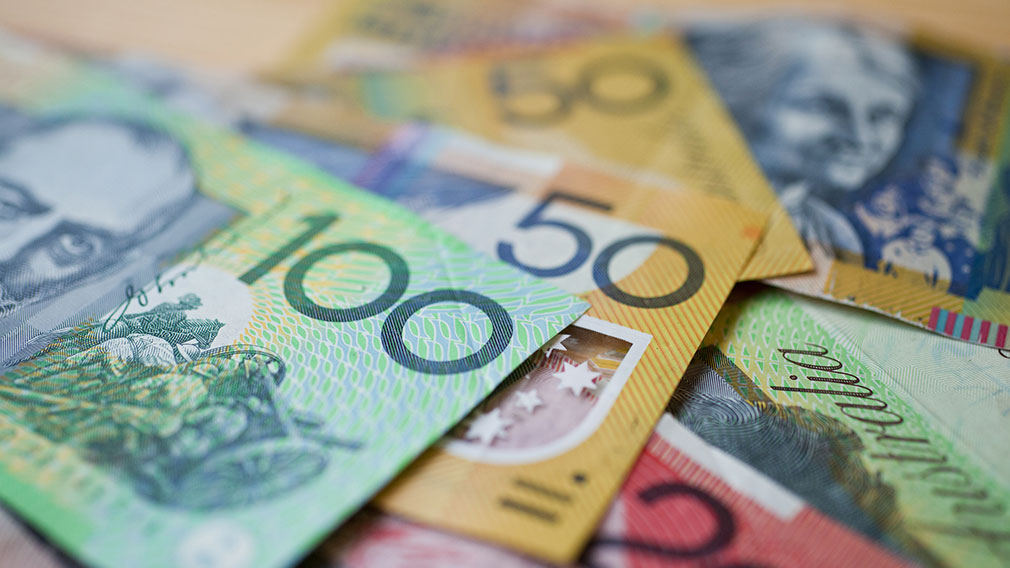FX BEAT: Struggling A$ may have further to fall

The A$ could extend its decline to 62 cents per U.S. dollar in the weeks ahead, says Westpac currency strategist Sean Callow. (Getty)
A strong U.S. dollar and China’s sluggish economy have helped to drive the Australian dollar to nine-month lows, and Westpac senior currency strategist Sean Callow thinks the move may have further to run.
“In the short-term, it's hard to see the catalyst for a sharp turn around,” Callow tells Wire in a podcast interview. “If the pressure of concerns over China and the strong US dollar remains intact, then we're probably looking at that 62 cent area against the U.S. currency that we saw in October last year.”
The Aussie has fallen from levels above 68 U.S. cents in mid-July to around 64 cents, its lowest since November 2022.
The strength of the U.S. economy this year has banished talk of a recession, causing the Federal Reserve to lift rates above 5 per cent, and hold them there, in turn boosting the U.S. dollar. Higher long-term U.S. bond yields are also attracting investors at the expense of the Aussie dollar.
At the same time, China’s economic recovery from the COVID lockdowns of 2022 has fizzled out surprisingly quickly, Callow notes. The country’s faltering property sector has grabbed the headlines in recent weeks, with major developer China Evergrande Group filing for bankruptcy protection in the U.S.
China is Australia’s biggest trading partner, making its economy a key barometer of sentiment towards the Aussie dollar, and global investors often use the currency as a proxy for their view on China, Callow says.
Another headwind for the Aussie is the interest rate outlook at home, with many economists, including Westpac’s, now believing that the Reserve Bank cash rate has peaked at 4.10 per cent.
“The RBA is saying that they might need to tighten further, but you certainly get the vibe that they think they've probably done enough,” Callow says, while noting that the market is still pricing in about a 60 per cent chance of another hike in coming months.
Yet while the gloom hanging over the Aussie looks entrenched, Callow says that things can turn around quickly. He notes that Beijing has “levers it can pull” to support growth. Those might include lowering official interest rates, or targeted spending to help certain parts of the economy.
“If they can get a bit of stability and some of this excessive gloom perhaps lifts, then we might be talking 67 or 68 cents for the Aussie, although it might take until year-end or early next year.”

He’ll also be on the lookout for signs that high U.S. interest rates are starting to bite there. That could accelerate the timetable for the Fed starting to loosen monetary policy and help to take some of the wind out of the U.S. currency’s sails.
Callow notes that the Aussie’s slide has been more of a steady drip compared with the sharp moves seen during the pandemic. As such, businesses with currency exposure have had time to adjust.
A weaker currency generally increases the cost of imported goods, but for many items it takes time for that to feed through.
There are exceptions: prices at the petrol pump are highly sensitive to moves in the global currency and oil markets. Australian consumers buying goods online in foreign currency will also see an immediate impact, and overseas travellers will notice a heavier burden on their wallets, especially to destinations in Europe and the United States.
In contrast, Australian-based companies that earn a big portion of their revenue in U.S. dollars, such as major mining and energy firms, will get a potential windfall when they repatriate those overseas earnings into their home currency.
As bleak as things might look for the Aussie dollar, the picture is arguably worse for its New Zealand counterpart, which has dropped from near 64 cents to below 60 cents against the U.S. dollar since mid-July.
New Zealand’s key dairy sector has been hit by falling prices, driven in part by softer demand from China, while the broader economy fell into a recession in the first quarter of 2023.
“RBNZ Governor Adrian Orr has said a recession is the ‘bare minimum’ needed to cool inflation sufficiently. That's a different angle from the RBA, where they're still hoping for a soft landing that avoids recession,” Callow says.
At 5.50 per cent, the RBNZ cash rate sits some way above Australia’s, and that will lend yield support to the Kiwi dollar. However, “the deeper the recession in New Zealand, the more markets will expect that rates will have to be cut aggressively.”
The Aussie/Kiwi cross rate has held fairly steady around 1.08, which is close to its 10-year average, Callow notes.





